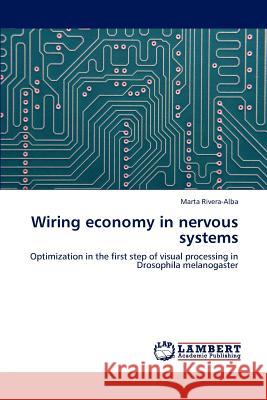Wiring Economy in Nervous Systems » książka
Wiring Economy in Nervous Systems
ISBN-13: 9783847332459 / Angielski / Miękka / 2012 / 152 str.
The economy law of the nervous systems was hypothesized by Santiago Ramon y Cajal, the famous Spanish neuroscientist, more than a century ago. It assumes that nervous systems are designed by evolution to be functional and economical at the same time. The functionality of the nervous systems cannot be argued but their optimality needed further quantitative testing. In this work we analyzed the anatomy of the neurons in the first step of visual processing in Drosophila melanogaster. We show that neurons are organized to minimize the total length of branches necessary to set up their connectivity network. First, a complete subnetwork of the visual system has been reconstructed in three dimensions, obtaining the position, shape and connectivity of all it neurons. And second, a new mathematical paradigm of wiring economy has been combined with volume exclusion to show that anatomy of the subnetwork reconstructed is determined by Cajal's economy law.
The economy law of the nervous systems was hypothesized by Santiago Ramón y Cajal, the famous Spanish neuroscientist, more than a century ago. It assumes that nervous systems are designed by evolution to be functional and economical at the same time. The functionality of the nervous systems cannot be argued but their optimality needed further quantitative testing. In this work we analyzed the anatomy of the neurons in the first step of visual processing in Drosophila melanogaster. We show that neurons are organized to minimize the total length of branches necessary to set up their connectivity network. First, a complete subnetwork of the visual system has been reconstructed in three dimensions, obtaining the position, shape and connectivity of all it neurons. And second, a new mathematical paradigm of wiring economy has been combined with volume exclusion to show that anatomy of the subnetwork reconstructed is determined by Cajals economy law.











